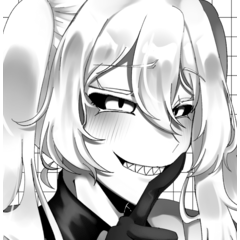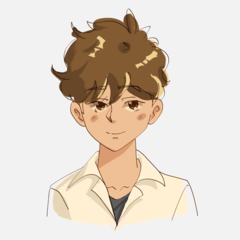Drawing Poses
Hi, there! Let’s talk about pose!
Pose is a series of gestures that can inform other people how you feel or the impression you’re trying to give off. Aside from facial expressions, pose is a powerful tool for us artists to communicate our ideas and feelings without words.
A perfect pose should be:
1. Anatomically correct,
2. Conveying the artist’s intention well whether it be emotion, action or impression,
3. Something the artist is satisfied with.
Sometimes, we know how to draw good human proportions, but stuck when it comes to drawing appealing poses. I knew that feeling so well!
This tutorial will cover basic human movements, types of poses, how to give more oomph to the poses and coloring trick.
If you prefer video, check out the link below! Anyway, let’s get started!
How Our Body Moves
Our body can move thanks to joints and muscles. Different body parts has different kinds of joints that allows certain movements.
For example, our arms-shoulders and legs-hip are linked by ball joints. It allows our limbs to move with little limitations. While our elbow and knee can only move towards one direction. Other parts of our body can move up and down, move sideways and twist.
It’s important to know the limit of our joints to prevent unnatural poses!
Other than movement limitations, pay attention to the muscles or else your art would look flat. Muscle puffs when it contracts, pretty much similar to how a cylinder pillow look when it’s folded.
Types of Movements
In general, there are two types of body movements: inwards and outwards.
Inward movements can indicate closeness/intimacy, defensiveness and protection. It can be used for poses that exude peace, calmness, sad or gloomy. Holding an emotion in can also be portrayed with inward movements.
Outward movements can indicate openness, energy and boldness. It can be used for poses that exude friendliness, liveliness or aggression.
The more extreme the inward or outward the movements are, the more intense it’ll look. This works when you want to portray intense emotion or force.
Type of Poses
1. Emotion Based Pose!
People shows their emotions through their gestures all the time and most gestures are universal all over the world. Most emotions are easier to perceive through facial expressions, but there are some poses that make the emotions obvious enough even if we omit facial expressions. This is especially true for poses that involves exaggerated movements.
Some emotions like excitement or nervousness involves either inward or outward movement. Others, like frustration, can be a combination of both.
2. Activity Based Pose.
While emotion based pose shows what the characters feel, activity based pose shows what the characters are doing. The activity can be anything from reading a book to running for your life!
Poses like running and thinking are obvious enough by itself.
But, in some cases, props can be helpful to give context.
3. Aesthetic Pose
Unlike the previous two, aesthetic or freestyle poses exists to give a certain impression instead of displaying emotion or activity. Cool, elegant, cute, sexy are some of the impressions people can get from aesthetic poses.
This is the kind of pose you can find on fashion catalogs, posters and key visuals for movies. Happens all the time when you take non-candid photos, too!
4. Body Part Posing
It’s also possible to pose just with one or two body parts. Advertisement do it all the time! Shoes ads feature feet, dumbbell ads featured muscular arm and so on.
The easiest body parts to pose are limbs, particularly the hands. Hand gestures are expressive and can mean a lot of things!
Giving Impact
To give more oomph to your work, you can combine emotion and action poses together.
The same activity can be drawn differently when emotion is added, creating different impressions.
Facial expression can also be a game changer. The same pose with different facial expressions portray different emotions.
Other than mixing activity pose with emotions and using facial expression, perspective (eye level) and angle can give a sense of depth.
For poses where there are force or speed, hair and clothes can help emphasize it.
Drawing Poses from Scratch
When drawing natural, dynamic and/or stylish looking posture, try to use “line of action” (#1) followed by “contrapposto” (#2) before adding the limbs (#3).
Both line of action and contrapposto are techniques covered in gesture drawing. I prefer stick figures instead of gesture drawing, but I find the techniques useful!
Line of action is a curve that is based on the spine movement. Unless you’re drawing rigid standing pose, the spine would naturally curve.
Contrapprosto is a way the body naturally twist where the shoulder line and hip line are not parallel, but titled in opposite directions.
In poses where legs support the body (standing, crouching, walking poses), when the hip is titled, the leg on the higher side is the leg that supports the body weight (red lines). In the case where the hip is straight, both legs supports the body.
The most obvious hip movement when walking can be seen from when female models walk on the runway thanks to the exaggerated hip and legs movements.
After done with the basic pose, start sketching the figure. Whichever sketching style you prefer works.
Initially, messed up the legs (right leg is the one supporting the body weight thus better to be in the front) and the right arm was too far from the body. I fixed the problems on this stage.
Drawing details: facial expression, hair, clothes and hand gestures.
Done!
Before we talk about coloring tips, let’s try drawing dynamic poses with the same steps.
Just like before, I started with stick figures and applied line of action and contrapposto to the poses.
Then start with the sketch.
Just like the previous pose, the process for this one is straightforward because there wasn’t much I need to change. I liked it as it is.
But for the other one, at first, I wanted a confident pose of a male spy holding a gun. I changed my mind and tried to draw a cautious action pose instead.
The spine, shoulders, arms and head are moving inward, while the legs are outward and with bigger movements to hint that the figure is ready to take action.
It took me a while to redraw, but it’s worth it! If you ever changed your mind midway when drawing a pose, change it. It’s better to spend more time drawing what you like rather than forcing yourself to stick with what you don’t.
The poses are done!
Coloring
Let’s do a simple coloring!
Start with base colors.
Followed by the skin and hair on another layer.
When drawing bare skin, remember to pay attention to the contour like the knees of the one in the middle.
Then shade the clothes on a new layer. Blending mode > Multiply.
After this, it’s time for special effect!
When you look at distant mountains, the further the mountain is, the brighter blue it’d look. That’s caused by the blue light scattered by the atmosphere. Visually, it helps us to perceive the distance.
Apply it to the pose! The right hand and the left leg is the one further from the viewer and we want to make it obvious.
Use Soft Airbrush and pick a light blue color, then paint it lightly.
Next, pay attention to overlapping parts. If there’s not enough contrast, the supposedly separate parts look like they’re merging together.
This especially happens a lot when we use dark colors.
Here the color of the sleeve and the body are the same. The outline doesn’t help much because how dark the colors are.
To fix it, simply add white line between them. Think of it as the back light.
It should be thin enough to blend into the picture but thick enough to give impact. I used Mapping Pen for this step.
And we’re done! The effects are subtle enough to not attract much attention, but still obvious enough to give impact.
I use simple coloring technique this time, but the same tricks can be used for any kind of coloring style.
Pose References
There are times when it’s hard to draw from imagination but it’s also hard to find references. To tackle that problem, you can always resort to mannequin and action figures for physically adjustable models.
If you prefer digital references, you can use 3D models.
I use Clip Studio Paint’s 3D model from time to time, especially when trying out tricky perspectives or when trying out different body shapes. Works like a charm!
If you're not familiar with the features, check out CSP’s official video about it:
Afterwords
In this tutorial, I used stick figures as the basic pose because it's what I prefer. Many people prefer gesture drawing and even drawing the rough sketch from the beginning without gesture/stick figures.
In the end, all roads lead to Rome.
Feel free to use any sketching method you like! Art is supposed to be fun.
Hope this tutorial helps!
























Comment